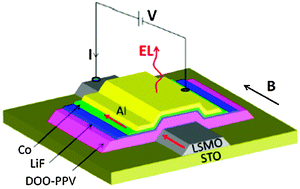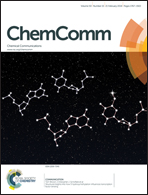The first decade of organic spintronics research
Abstract
The first decade of organic spintronics research has benefitted from the analogy and previous experience of the inorganic spintronics field, coupled with the unlimited versatility of organic materials synthesis. At the same time, the field of organic spintronics has developed into an attractive and promising field of its own, with rich physics and promising unique potential applications. We review here a set of significant milestones achieved in organic spintronic devices such as organic spin valves, bipolar spin-valves, and hybrid organic/inorganic light emitting diodes in comparison with representative inorganic spintronic devices. We also point out acute problems that need to be resolved before the young field of organic spintronics can mature.

- This article is part of the themed collection: Molecular Spintronics

 Please wait while we load your content...
Please wait while we load your content...